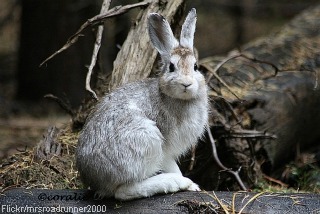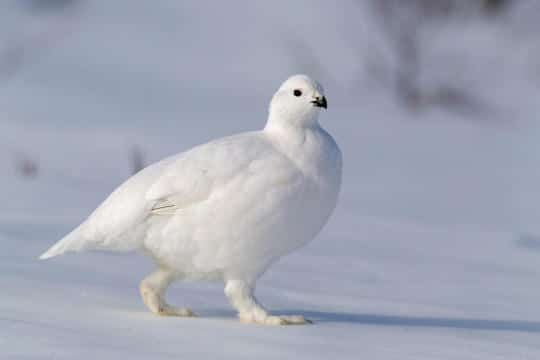Winter in Pennsylvania has it pros and cons. The not-so-wonderful aspects of the season, such as shoveling sidewalks and trudging through knee-deep snow drifts, can be considered character builders at best. But then there’s the fun stuff, like ice skating and sledding. These can more than make up for the negative things, especially if you’re a kid. As a child, I remember doing these winter activities (plus making snowmen and snow angels, too). A lot of the activities that we see as leisure fun have actually been around for thousands of years. Through invention and adaptation, both humans and animals have learned how to deal with their wintry landscapes and safely travel from one icy area to another.

Today, people associate ice skating with sports and recreation. But, for a long time in human history, skates were essential for winter travel. They date back at least 3,000 years to around the end of the Bronze Age, when the people of Eastern Europe and Russia created skates out of animals’ shin bones (most likely cow and horse). These bone skates lied flat to the ice so the wearer could glide in all directions. However, control and speed were somewhat lacking.
But a dramatic change happened in the 13th century when the metal blade was introduced. Two hundred years later, better control and faster speed were achieved when sturdier bindings were added. Rapid travel was now possible during the cold winter months. In the 15th century Netherlands, for example, the canals that were built to power water mills and irrigate farmland in the summer would transform into frozen highways for thousands of travelers in the winter.
Today, we no longer need to depend on nature because temperature-controlled ice rinks are at our disposal all year round. But, whether the ice is natural or man-made, scientists are still not 100% sure how ice skating is possible. There are multiple theories. One is that the extreme pressure of the skate blade on the ice creates a high viscosity bead of melt water that the skate glides on. Another theory says that the uppermost layer of ice is made up of an extremely thin (10-20 nanometers) layer of freely moving water molecules. The skate blade glides across this quasi-liquid layer. It’s very similar to the support provided by the surface tension of the top layer of liquid water. Whatever the reason that makes skating possible, people just know that they really like it. Skating is an extremely popular activity, especially as it relates to sports.
Athletes can prefer different temperatures and textures of ice. “Slow ice” is warmer, softer, and rougher, and figure skaters prefer it for pushing off and landing complicated jumps. In contrast, hockey players prefer “fast ice.” It’s colder, harder, and smoother, which makes skating faster, passing easier, and puck behavior more predictable.
And if you could equate a hockey player to any creature in the animal world, it would be a penguin. These experts of ice travel prefer “fast ice.” This is because they use tobogganing as a primary way to get around. The toboggan, a thin, flat, flexible piece of wood, has been used for centuries by humans as a transporter of supplies as well as for leisure fun. But, in the case of penguins, they themselves are the toboggan! Walking for penguins is slow-going. They can only waddle along at about 1.5 mph. With tobogganing, penguins can move faster with no risk of falling. On horizontal ice, they slide around on their bellies, using their flippers and feet for propulsion, steering, and braking. But when they find a nice downslope…stand back! Like tiny tuxedoed torpedoes, penguins can slide down an icy hill at surprising speeds.

While penguins love to take advantage of ice’s gliding properties, polar bears have developed adaptations that keep slipping and sliding to a minimum. The sole of a polar bear’s foot has thick, black pads that are covered with small, soft dermal bumps (also called papillae) that create friction between their foot and the ice. Long hairs growing between the pads and toes, plus curved claws, also provide traction. They are the only bears that walk in a plantigrade, heel-to-toe, manner. Their gait is almost human-like, with the one slight difference that their toes point inward to avoid slipping. Their forepaws are also similar in structure to a human hand, so much so that it would be difficult for the average person to tell the difference between the bones of a polar bear paw and the bones of a human hand. This round, flattened paw shape acts like a snowshoe that spreads out their weight as they move over the snow.
Polar bears aren’t the only animals adapted to walking on top of snow.
Thousands of years ago, large regions of the world were snowbound for much of the year, including North America. This meant animals needed to adapt to their environments; some of these animals are still around today, like the snowshoe hare, whose wide, furry, large-toed feet—larger than any other rabbit species— allowed them to move easily over deep snow.

Like the hare, the ptarmigan, a partridge-like grouse, also lives in North America and has its own set of built-in snowshoes. As winter approaches, its feet become more feathery and they grow longer claws. These seasonal changes increase the weight-bearing surface of their feet by four times and reduce sinking in the snow by half.

Caribou (also known as reindeer in Russia and Scandinavia) go through a similar transformation with the coming of winter. Their sharp-edged hooves grow longer, their foot pads get tougher, and extra fur grows between and around their toes. These changes transform their already wide, flat feet into the ideal snowshoe for a frosty trek. For animals such as these, developing coping strategies for cold weather transport are essential to surviving and thriving in a frozen landscape.

So this winter, if you just happen to be strolling along admiring the Narnia-esque view around you, and you fail to notice that patch of ice at your feet, you may end up flat on your back, staring up at the sky, wondering “Why me?” but don’t despair. Instead, take comfort in the fact that even penguins, the masters of the ice, slip and take spectacular spills from time to time. At least you’re in good company!
Shelby Wyzykowski is a Gallery Experience Presenter in CMNH’s Life Long Learning Department. Museum staff, volunteers, and interns are encouraged to blog about their unique experiences and knowledge gained from working at the museum.
